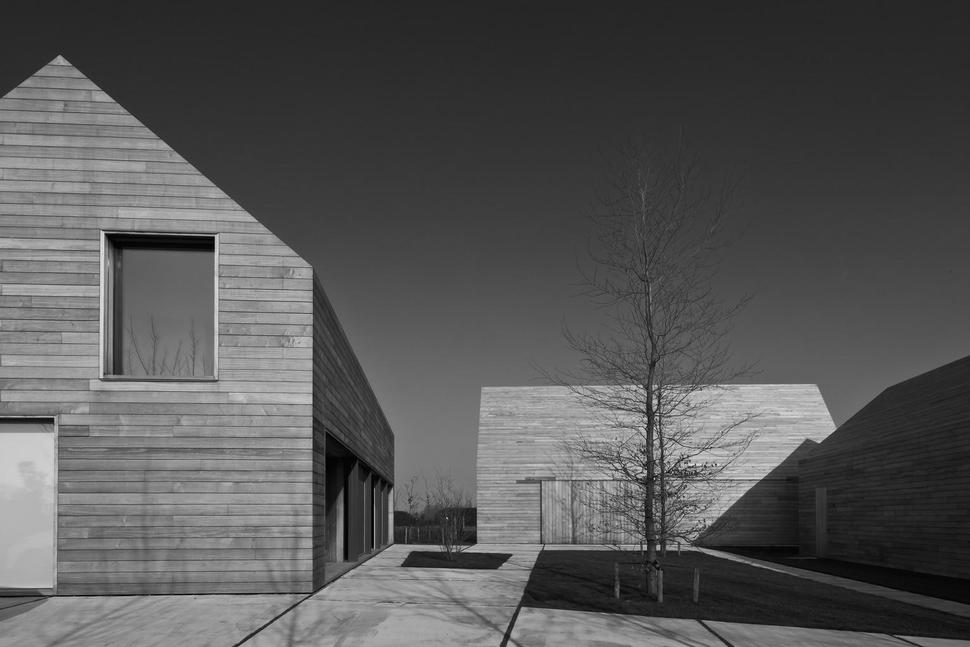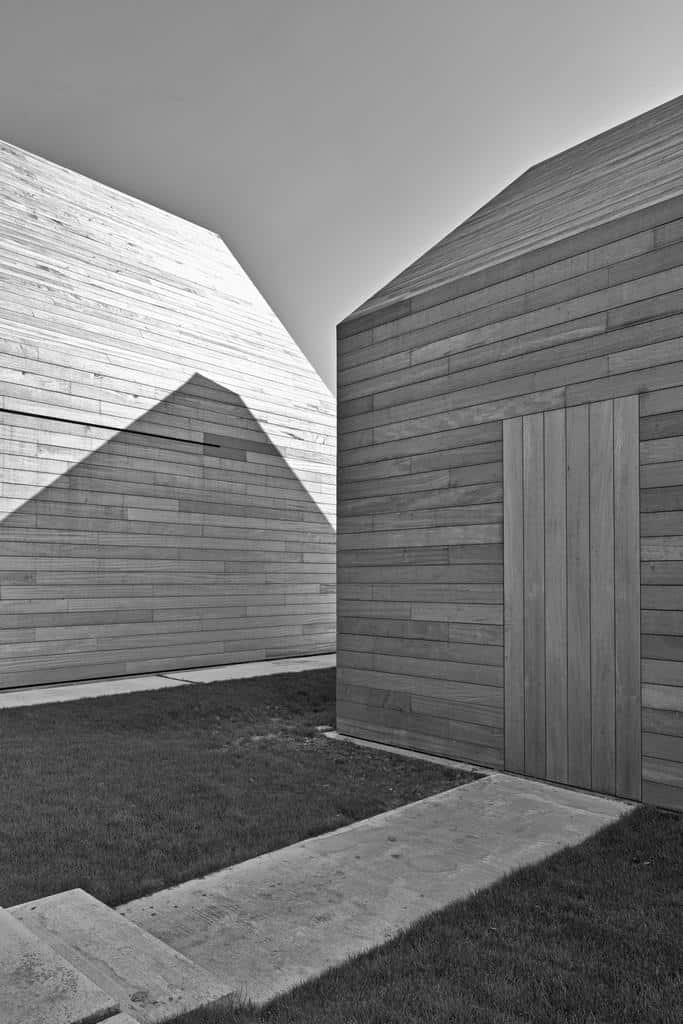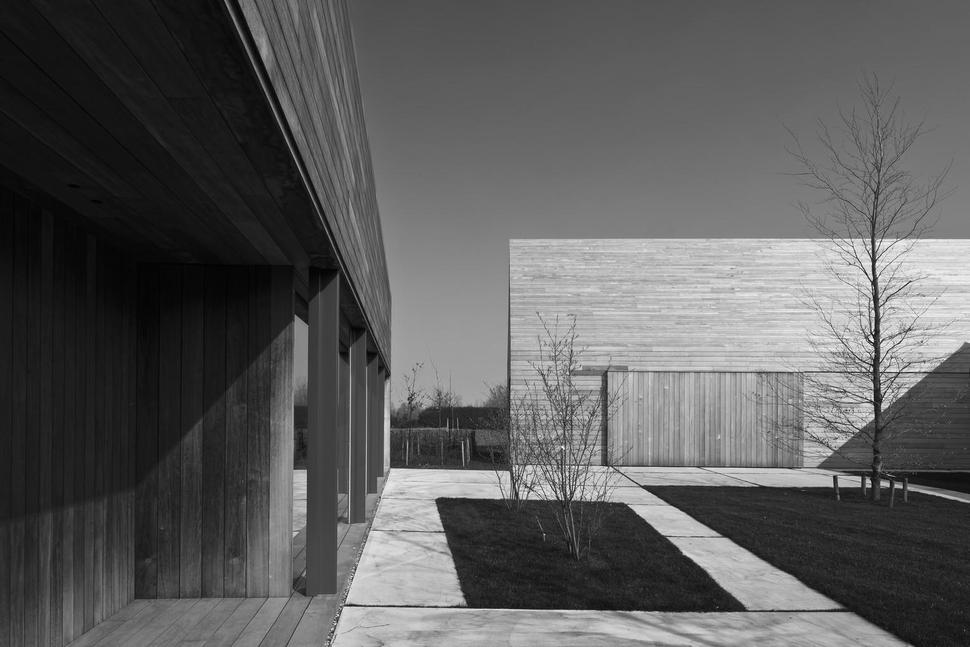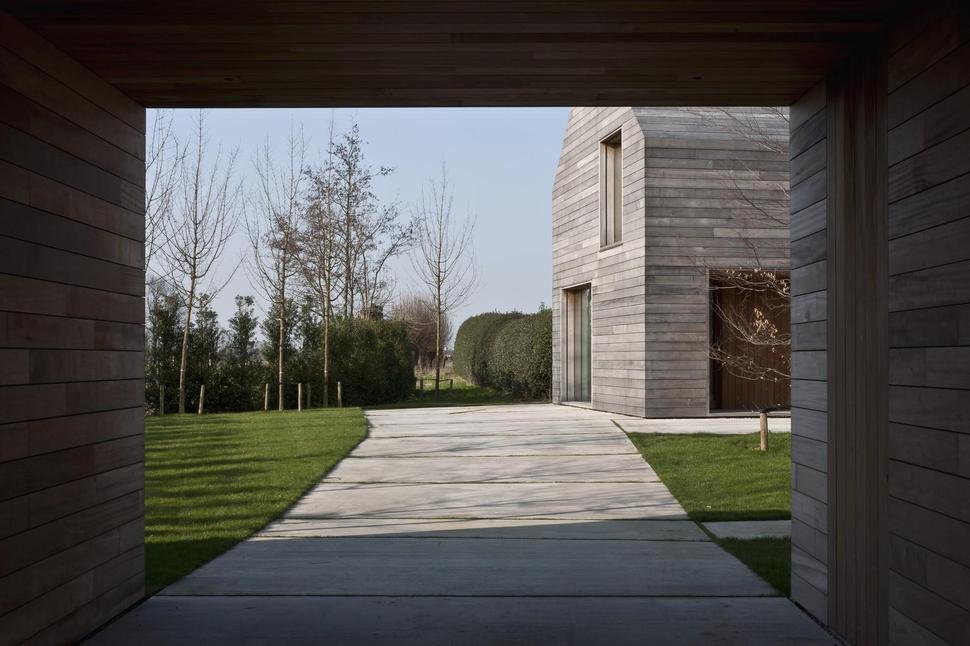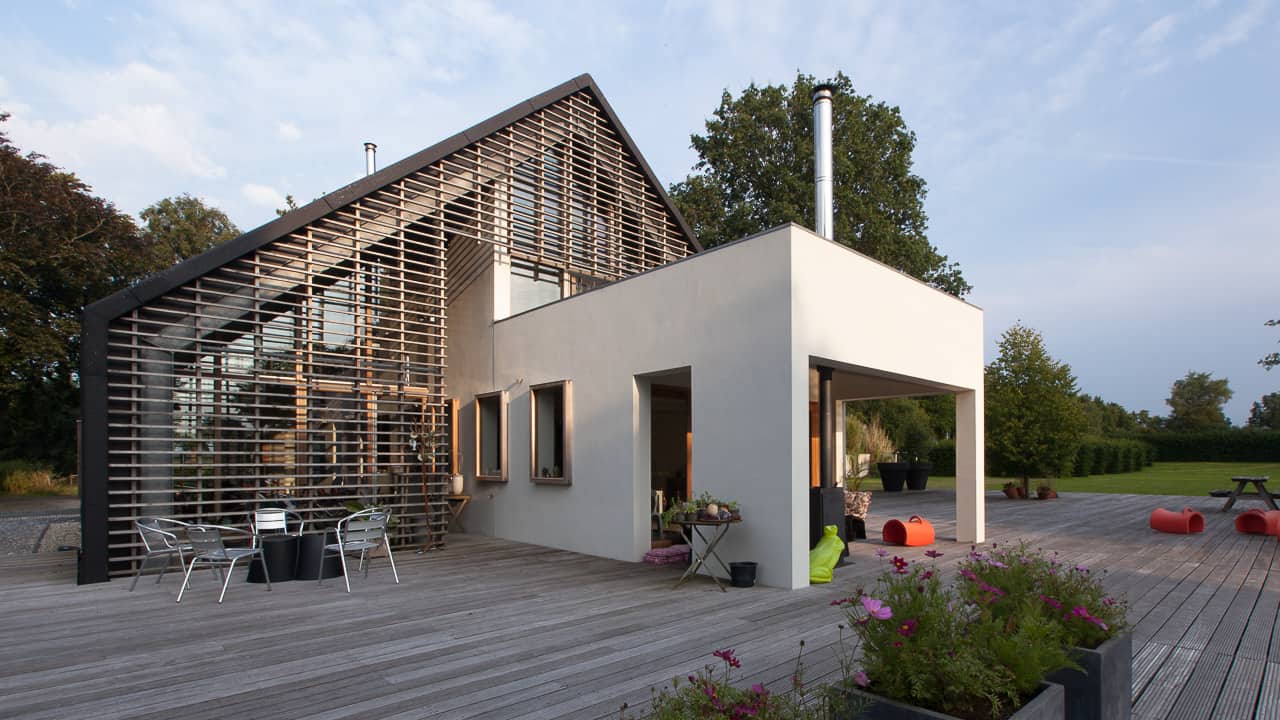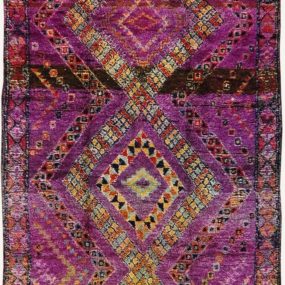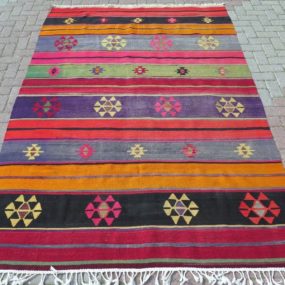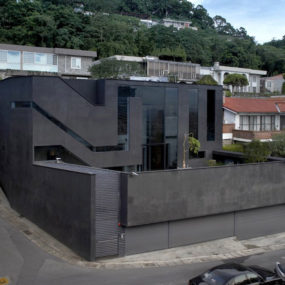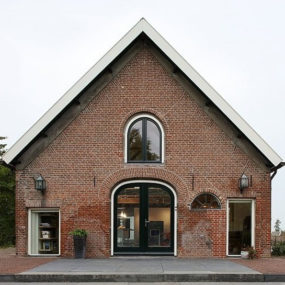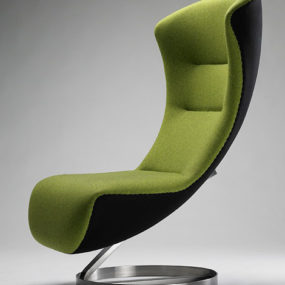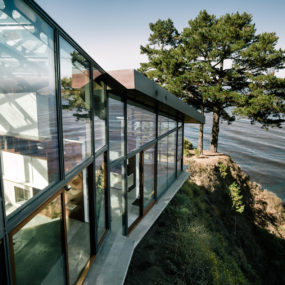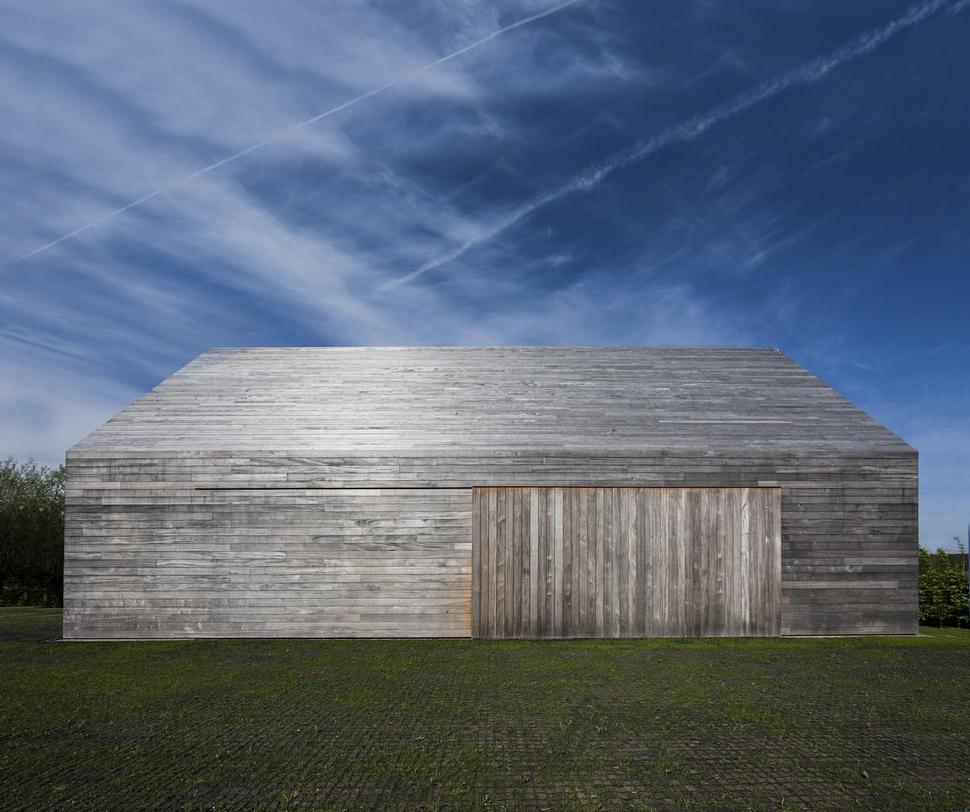
For those unfamiliar with the traditional Flemish farms, the three buildings that make up this rural residence could be anything from church, to warehouse, to barn or farm. Vincent Van Duysen Architects have decided to completely rebuild the three buildings rather than rehabilitate the old existing ones. In order to integrate the project in its rural environment, the architects have maintained the main elements of the traditional farm of the region: a long extended volume built perpendicular to the road and a 45° slope tympanum roof. From there on they start breaking with tradition and imagine a completely contemporary project. This new vision stands out by the lack of ornamentation and by the creation of pure geometrical shapes. These shapes are achieved thanks to the use of a wooden envelope that dresses up the whole building, roof included. Structural elements such as gutters and chimneys are concealed by the wooden coat, therefore the shape preserves its purity. The big glazed surfaces are also concealed by big-sized sliding shutters that make the buildings look windowless when they are closed. The only visible openings are a few small square facade and roof windows. The three buildings maintain the original layout, with one facade facing an internal courtyard and with the other facing the fields.

The main entrance is sharply cut into the main building, like a wooden tunnel that protects the main entrance door.
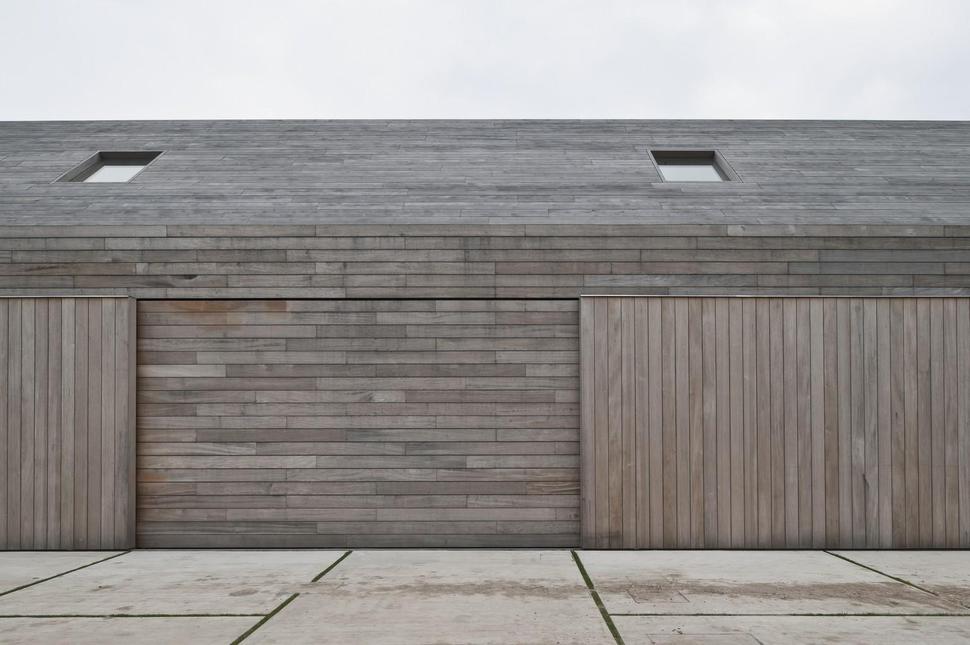
The sliding shutters can be distinguished because of the different orientation of the wooden slats from the rest of the building. When they are closed, they make the buildings look like small wooden fortresses.

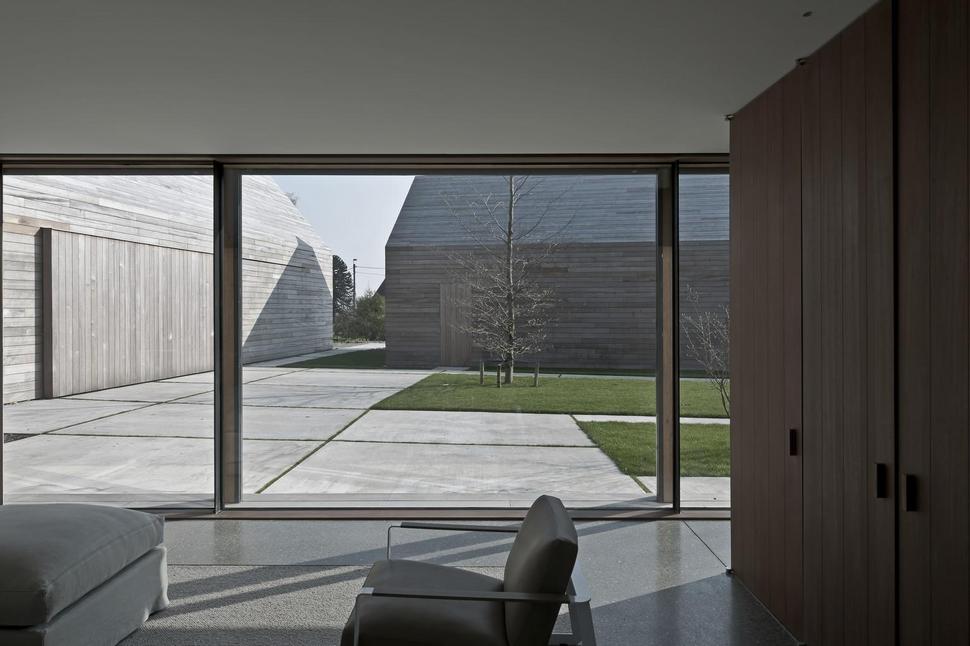
When the shutters are open the houses are flooded by light through the big glazed surfaces. These shutters also serve an insulation purpose and they regulate the temperature in the buildings. The three buildings are what we call passive houses, as they produce the energy they consume. The architects that helped achieve this energy performance is studio Denc.
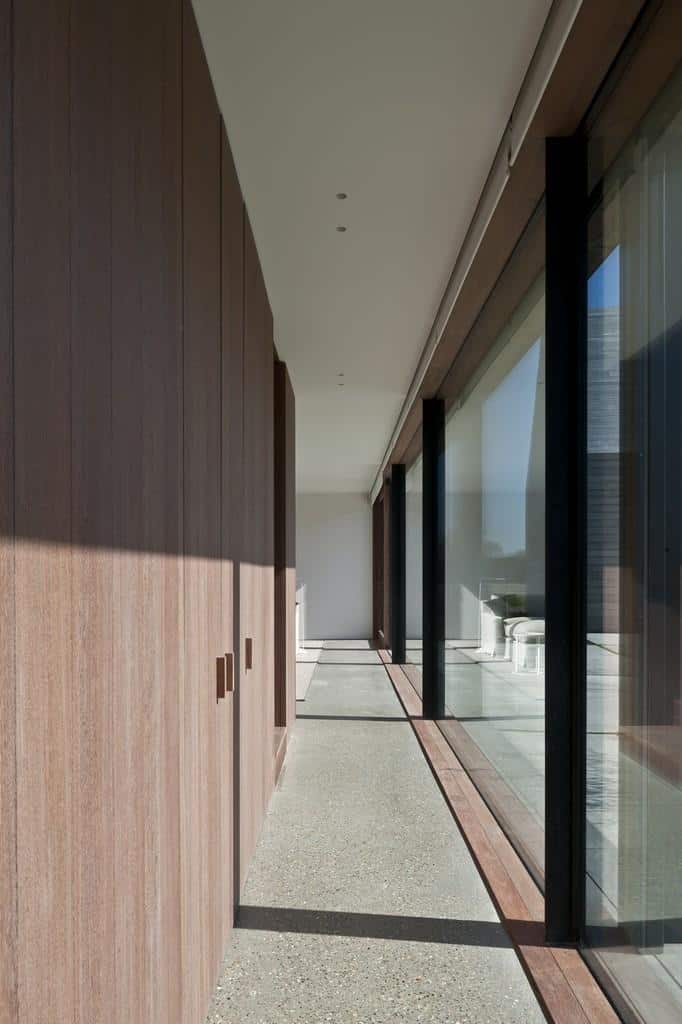
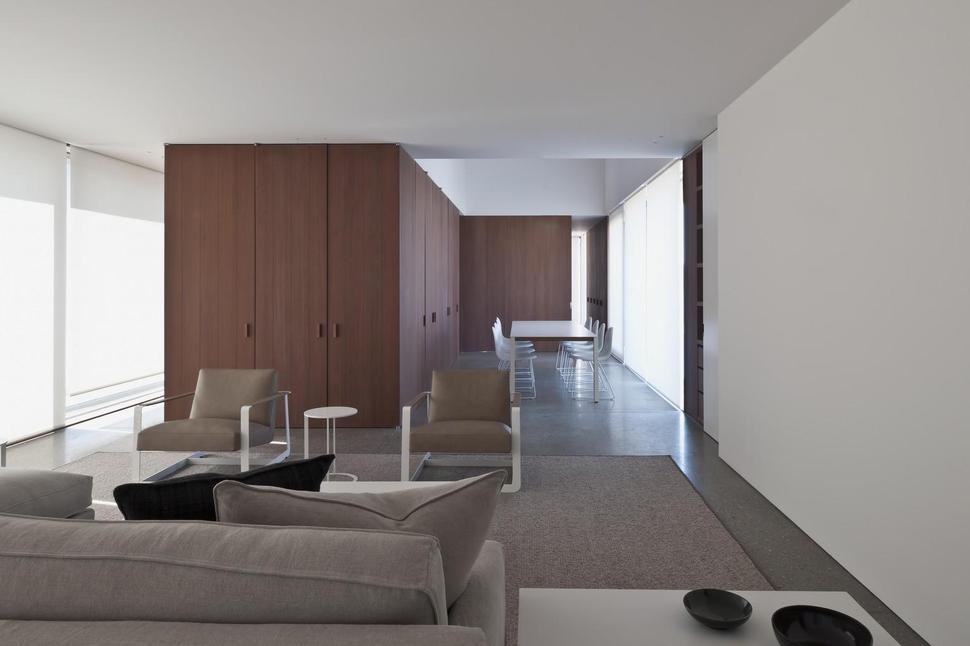
Inside, brushed concrete is used extensively both for flooring and for counters and bathroom furniture. Concrete is one of the three main materials used throughout the residence, together with wood and glass.

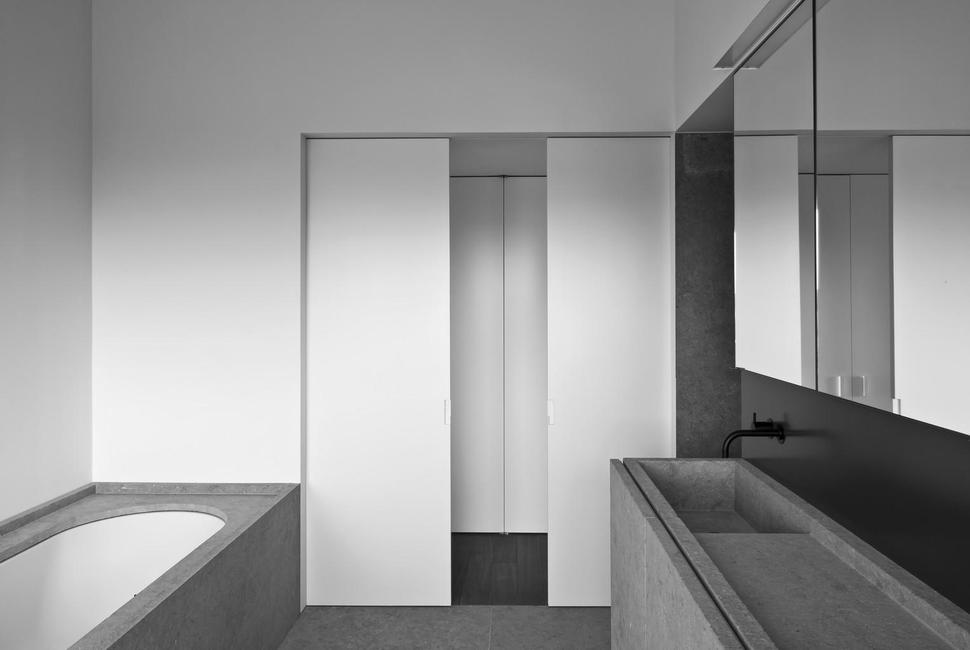
The bathrooms are minimalistic, designed with a mix of concrete and ceramic. Design accents such as faucets and towel warmers are the only decorative elements.
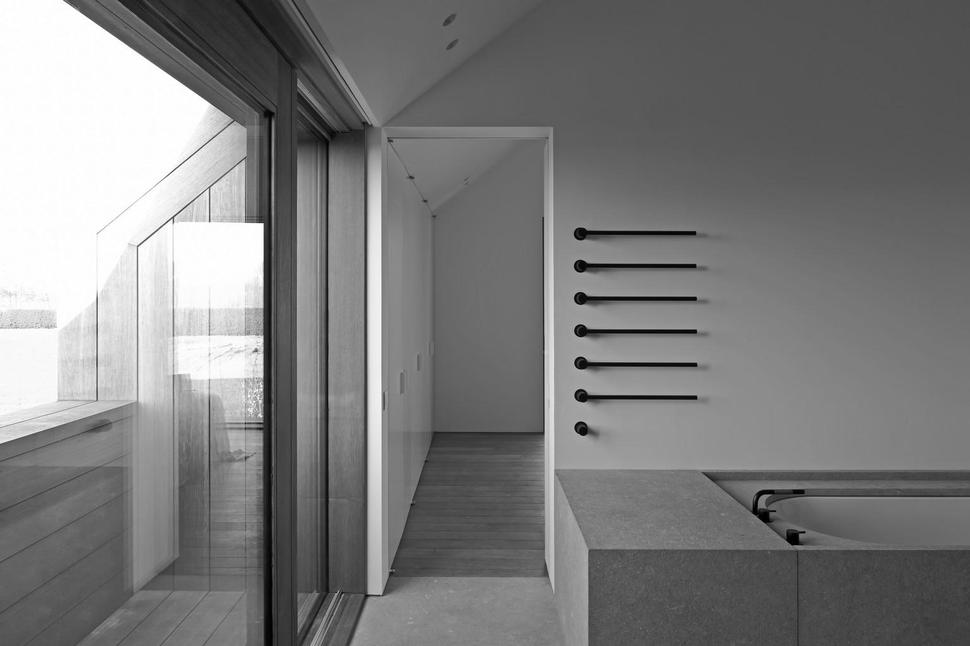
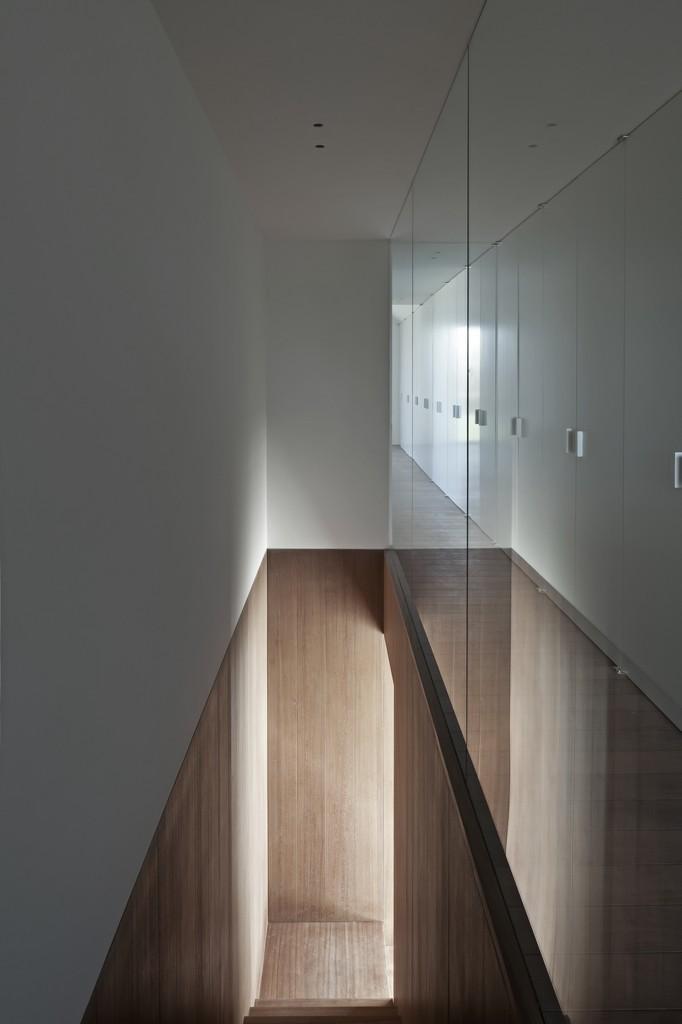
In darker corners, corridors and staircases, the use of mirrors helps reflecting the existing light and thus increasing its effects.

The three buildings of the property are totally independent and are interconnected by paths in concrete slabs. The communal meeting place is represented by the interior courtyard.
